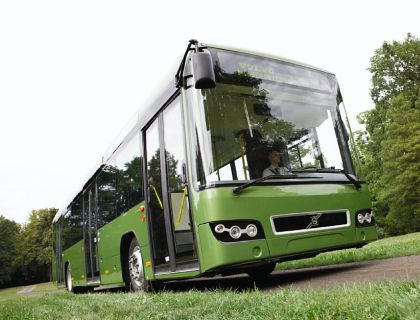
(CZ + EN) Mnoho obrázků. (Volvo 7700 Hybrid. Market’s first commercially viable hybrid bus.)
(CZ + EN) Mnoho obrázků. (Volvo 7700 Hybrid. Market’s first commercially viable hybrid bus.)
Poprvé je představen obchodně realizovatelný hybridní autobus určený pro trh - Volvo 7700 Hybrid. S až o 30% nižší spotřebou a hybridními komponentami Volvo mohou dopravci získat zvýšené pořizovací náklady během 5 až 7 let.
Požadavky na podstatné snížení spotřeby v dopravě silně narůstají. Jedním z nejdůležitějších důvodů je potřeba snížení emisí CO2, dále extrémní cena ropy s očekáváním dalšího nárůstu.
Volvo 7700 Hybrid snižuje spotřebu a tím i emise CO2 o 30%. Dieselový motor EURO 5 EEV snižuje emise částic a NOX až o 40 - 50% v porovnání s běžným dieselem, volitelný je částicový filtr. Hybridní technologie existuje již velmi dlouho, ale zatím byla příliš drahá a poskytovala příliš malé úspory paliva. Nástup Volvo 7700 Hybrid situaci mění. .
Volvo zvolilo technologii paralelního hybridu, kterou využívá jak u autobusů, tak i u nákladních vozů. Koncept se nazývá I-SAM a zahrnuje kombinovaný startovací motor, elektromotor, generátor a elektronickou řídící jednotku a pracuje s dieselovým motorem, I-shift převodovkou Volvo a baterií lithium-ion.
Jako paralelní hybrid může být autobus poháněn nezávisle elektromotorem nebo dieselem nebo oběma simultánně. Ve výsledku může být autobus osazen menším, pětilitrovým dieselovým motorem oproti devítilitrovému u klasického dieseli Volvo 7700. Další výhodou technologie Volvo je možnost vyřazení dieselového motoru na zastávkách a světelných křižovatkách. Autobus se rozjíždí elektromotorem a po dosažení rychlosti 15 - 20 km/h automaticky startuje dieselový motor až nakonec je pohon pouze dieselem. Řešení je velkým přínosem pro životní prostředí ve městech.
Volvo Bus předpokládá, že hybridní autobus bude mít srovnatelnou životnost a potřeby údržby jako klasický diesel.
Z TZ Volvo Bus Corporation 24.9.2008. Kompletní v angličtině.
The demand for a substantial reduction in fuel consumption within the transportation industry is growing increasingly stronger and for many reasons. One of the most important is the need to reduce CO2 emissions that affect our climate. Another is the extremely high price of oil and expected increase in the foreseeable future. With lower fuel consumption more, and more environmental friendly, public transportation can be acquired for the same investment.
The Volvo 7700 Hybrid makes an important contribution to an improved environment. The lower fuel consumption reduces the emission of the greenhouse gas CO2 by up to 30%. The diesel engine in the bus is a Euro V generation engine that meets the EEV standard with regard to emissions. The discharge of particles and nitrous oxides declines by up to 40-50% compared with the diesel version. For customers who choose the optional particle filter, particle emissions will decline substantially. Hybrid technology has existed for a long time, but despite increased environmental demands it has been too expensive and provided too little fuel savings. This situation changes with the advent of the Volvo 7700 Hybrid.
Large volumes
Volvo has chosen to develop a parallel hybrid with a technology that will be used in buses as well as trucks and construction equipment within the Group. Long term, this will involve larger volumes, which reduces costs.
Volvo’s hybrid concept is called I-SAM and comprises a combined start motor, electric motor, generator and an electronic control unit. I-SAM works together with a diesel engine and Volvo’s acclaimed I-shift gearbox. In addition, a lithium-ion battery is used that is charged during braking via the electric motor/generator. This battery then provides energy to the electric motor for drive power.
As a parallel hybrid, the bus can be powered by the electric motor or the diesel engine independently and well as by both engines simultaneously. As a result, the bus could be equipped with a smaller, 5-liter diesel engine compared with the 9-liter engine in the diesel version of the Volvo 7700. The bus’s performance is enhanced, but fuel consumption is reduced.
“Another major benefit with Volvo’s hybrid technology is that the diesel engine will be turned off at bus stops and traffic lights,” says Maurice Brown, Volvo Bus’s product manager for city buses in Europe. “The bus starts moving driven by the electric motor and when the bus reaches 15-20 kph, the diesel engine starts up automatically feeding in the mechanical power until driven by the diesel engine only.”
This solution is a major benefit for the environment in cities. Passengers, pedestrians and fellow road-users, are spared from noise and exhaust fumes.
Wide range of uses
Hybrid technology is well suited for vehicles with many starts and stops, perfect for buses in heavy city traffic. The advantage with the parallel hybrid technology, that Volvo has chosen, is that the buses also operate well in suburban traffic with less frequent halts at bus stops. The reason is the mechanical coupling between the diesel engine and the driveshaft. With this, the inefficiency in converting from mechanical power to electrical and back again is avoided.
“It is highly important for our customers that the buses also save fuel outside the most densely populated areas,” says Maurice Brown. “Many of the large operators need to move the bus around to different areas during the bus’s lifetime and this does not work with a technology that is suited only for the most extreme city traffic.”
A significant reason for the fuel savings being so large as up to 30% in Volvo’s hybrid bus is that all hybrid components are developed by Volvo.
“A common approach earlier was that bus manufacturers purchased hybrid components externally and attempted to adapt them to their own bus, but this is difficult,” relates Maurice Brown. “Since we developed the components internally, we have been able to integrate the new technology with both the engine’s and the bus’s other energy usage and thereby optimize the bus’s fuel consumption fully. At the same time we could ensure very high reliability.”
Electric-powered doors
The electrification of many of the support systems also contributes to the substantial fuel savings. Instead of loading the diesel engine, the system is powered by recovered braking energy. The door-opening function is powered electrically as well as the air compressor, the air-conditioning and power steering.
Volvo Bus calculates that the new hybrid bus has the same lifetime as the comparable diesel bus. Maintenance of the bus is carried out in the same manner as with the diesel buses and in certain cases the maintenance requirement is even less.
“The electric motor/generator is so powerful that that it will often stop the bus itself. Wear on the wheel brakes will decline, resulting, for example, in longer intervals between replacement of the brake linings,” says Maurice Brown.
Carry more passengers
With many of today’s hybrid solutions, the bus becomes substantially heavier and, consequently, can carry fewer passengers. It is the opposite with the Volvo 7700 Hybrid. The bus weights only 100 kilograms more than a diesel version. As a result of the batteries being placed on the roof forward of the front axle, the bus gains a weight distribution whereby it can carry up to seven more passengers than its diesel counterpart.
Volvo Bus was not required to compromise on passenger space to gain space for the hybrid technology. The hybrid driveline does not require any more space than the standard driveline and sits in the same location. This means that the number of passenger seats is the same. Precisely as with the Volvo 7700, a smooth flow of passengers through the bus is facilitated due to the broad center aisle, completely level floor and wide doors.
The Volvo 7700 Hybrid features its own exterior profile compared with the diesel version. The roof line and rear-end of the bus have smooth, sweeping lines commensurate with the hybrid technology’s contribution to a cleaner environment.
The pre-series buses will be delivered to customers during 2009, while mass production begins in early 2010.
September 24, 2008
Požadavky na podstatné snížení spotřeby v dopravě silně narůstají. Jedním z nejdůležitějších důvodů je potřeba snížení emisí CO2, dále extrémní cena ropy s očekáváním dalšího nárůstu.
Volvo 7700 Hybrid snižuje spotřebu a tím i emise CO2 o 30%. Dieselový motor EURO 5 EEV snižuje emise částic a NOX až o 40 - 50% v porovnání s běžným dieselem, volitelný je částicový filtr. Hybridní technologie existuje již velmi dlouho, ale zatím byla příliš drahá a poskytovala příliš malé úspory paliva. Nástup Volvo 7700 Hybrid situaci mění. .
Volvo zvolilo technologii paralelního hybridu, kterou využívá jak u autobusů, tak i u nákladních vozů. Koncept se nazývá I-SAM a zahrnuje kombinovaný startovací motor, elektromotor, generátor a elektronickou řídící jednotku a pracuje s dieselovým motorem, I-shift převodovkou Volvo a baterií lithium-ion.
Jako paralelní hybrid může být autobus poháněn nezávisle elektromotorem nebo dieselem nebo oběma simultánně. Ve výsledku může být autobus osazen menším, pětilitrovým dieselovým motorem oproti devítilitrovému u klasického dieseli Volvo 7700. Další výhodou technologie Volvo je možnost vyřazení dieselového motoru na zastávkách a světelných křižovatkách. Autobus se rozjíždí elektromotorem a po dosažení rychlosti 15 - 20 km/h automaticky startuje dieselový motor až nakonec je pohon pouze dieselem. Řešení je velkým přínosem pro životní prostředí ve městech.
Volvo Bus předpokládá, že hybridní autobus bude mít srovnatelnou životnost a potřeby údržby jako klasický diesel.
Z TZ Volvo Bus Corporation 24.9.2008. Kompletní v angličtině.
Volvo 7700 Hybrid. Market’s first commercially viable hybrid bus
For the first time there is now a commercially viable hybrid bus on the market, the Volvo 7700 Hybrid. With up to 30% lower fuel consumption and hybrid components from Volvo, bus operators can earn a payback on the extra cost in only five to seven years.The demand for a substantial reduction in fuel consumption within the transportation industry is growing increasingly stronger and for many reasons. One of the most important is the need to reduce CO2 emissions that affect our climate. Another is the extremely high price of oil and expected increase in the foreseeable future. With lower fuel consumption more, and more environmental friendly, public transportation can be acquired for the same investment.
The Volvo 7700 Hybrid makes an important contribution to an improved environment. The lower fuel consumption reduces the emission of the greenhouse gas CO2 by up to 30%. The diesel engine in the bus is a Euro V generation engine that meets the EEV standard with regard to emissions. The discharge of particles and nitrous oxides declines by up to 40-50% compared with the diesel version. For customers who choose the optional particle filter, particle emissions will decline substantially. Hybrid technology has existed for a long time, but despite increased environmental demands it has been too expensive and provided too little fuel savings. This situation changes with the advent of the Volvo 7700 Hybrid.
Large volumes
Volvo has chosen to develop a parallel hybrid with a technology that will be used in buses as well as trucks and construction equipment within the Group. Long term, this will involve larger volumes, which reduces costs.
Volvo’s hybrid concept is called I-SAM and comprises a combined start motor, electric motor, generator and an electronic control unit. I-SAM works together with a diesel engine and Volvo’s acclaimed I-shift gearbox. In addition, a lithium-ion battery is used that is charged during braking via the electric motor/generator. This battery then provides energy to the electric motor for drive power.
As a parallel hybrid, the bus can be powered by the electric motor or the diesel engine independently and well as by both engines simultaneously. As a result, the bus could be equipped with a smaller, 5-liter diesel engine compared with the 9-liter engine in the diesel version of the Volvo 7700. The bus’s performance is enhanced, but fuel consumption is reduced.
“Another major benefit with Volvo’s hybrid technology is that the diesel engine will be turned off at bus stops and traffic lights,” says Maurice Brown, Volvo Bus’s product manager for city buses in Europe. “The bus starts moving driven by the electric motor and when the bus reaches 15-20 kph, the diesel engine starts up automatically feeding in the mechanical power until driven by the diesel engine only.”
This solution is a major benefit for the environment in cities. Passengers, pedestrians and fellow road-users, are spared from noise and exhaust fumes.
Wide range of uses
Hybrid technology is well suited for vehicles with many starts and stops, perfect for buses in heavy city traffic. The advantage with the parallel hybrid technology, that Volvo has chosen, is that the buses also operate well in suburban traffic with less frequent halts at bus stops. The reason is the mechanical coupling between the diesel engine and the driveshaft. With this, the inefficiency in converting from mechanical power to electrical and back again is avoided.
“It is highly important for our customers that the buses also save fuel outside the most densely populated areas,” says Maurice Brown. “Many of the large operators need to move the bus around to different areas during the bus’s lifetime and this does not work with a technology that is suited only for the most extreme city traffic.”
A significant reason for the fuel savings being so large as up to 30% in Volvo’s hybrid bus is that all hybrid components are developed by Volvo.
“A common approach earlier was that bus manufacturers purchased hybrid components externally and attempted to adapt them to their own bus, but this is difficult,” relates Maurice Brown. “Since we developed the components internally, we have been able to integrate the new technology with both the engine’s and the bus’s other energy usage and thereby optimize the bus’s fuel consumption fully. At the same time we could ensure very high reliability.”
Electric-powered doors
The electrification of many of the support systems also contributes to the substantial fuel savings. Instead of loading the diesel engine, the system is powered by recovered braking energy. The door-opening function is powered electrically as well as the air compressor, the air-conditioning and power steering.
Volvo Bus calculates that the new hybrid bus has the same lifetime as the comparable diesel bus. Maintenance of the bus is carried out in the same manner as with the diesel buses and in certain cases the maintenance requirement is even less.
“The electric motor/generator is so powerful that that it will often stop the bus itself. Wear on the wheel brakes will decline, resulting, for example, in longer intervals between replacement of the brake linings,” says Maurice Brown.
Carry more passengers
With many of today’s hybrid solutions, the bus becomes substantially heavier and, consequently, can carry fewer passengers. It is the opposite with the Volvo 7700 Hybrid. The bus weights only 100 kilograms more than a diesel version. As a result of the batteries being placed on the roof forward of the front axle, the bus gains a weight distribution whereby it can carry up to seven more passengers than its diesel counterpart.
Volvo Bus was not required to compromise on passenger space to gain space for the hybrid technology. The hybrid driveline does not require any more space than the standard driveline and sits in the same location. This means that the number of passenger seats is the same. Precisely as with the Volvo 7700, a smooth flow of passengers through the bus is facilitated due to the broad center aisle, completely level floor and wide doors.
The Volvo 7700 Hybrid features its own exterior profile compared with the diesel version. The roof line and rear-end of the bus have smooth, sweeping lines commensurate with the hybrid technology’s contribution to a cleaner environment.
The pre-series buses will be delivered to customers during 2009, while mass production begins in early 2010.
September 24, 2008
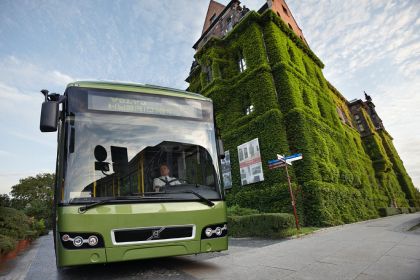
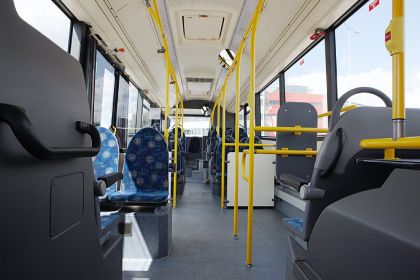
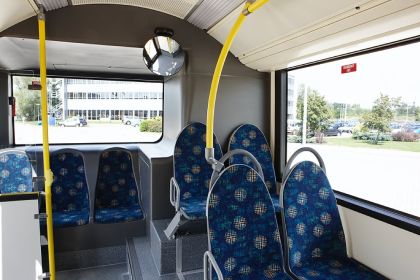
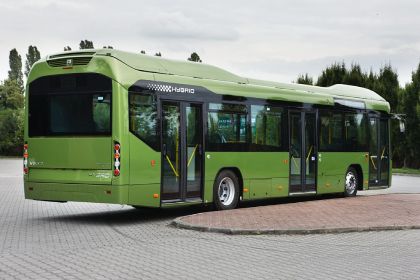
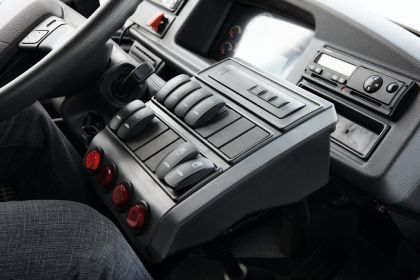
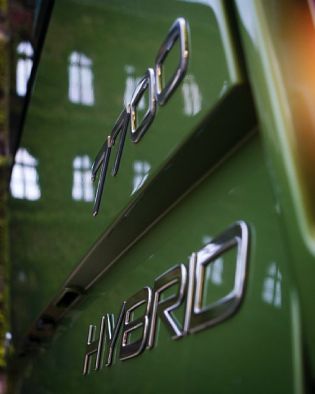
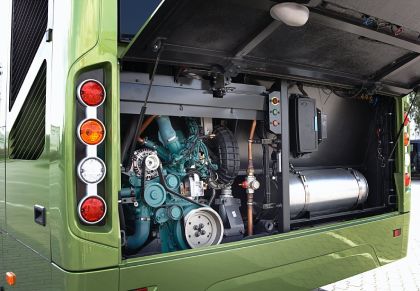



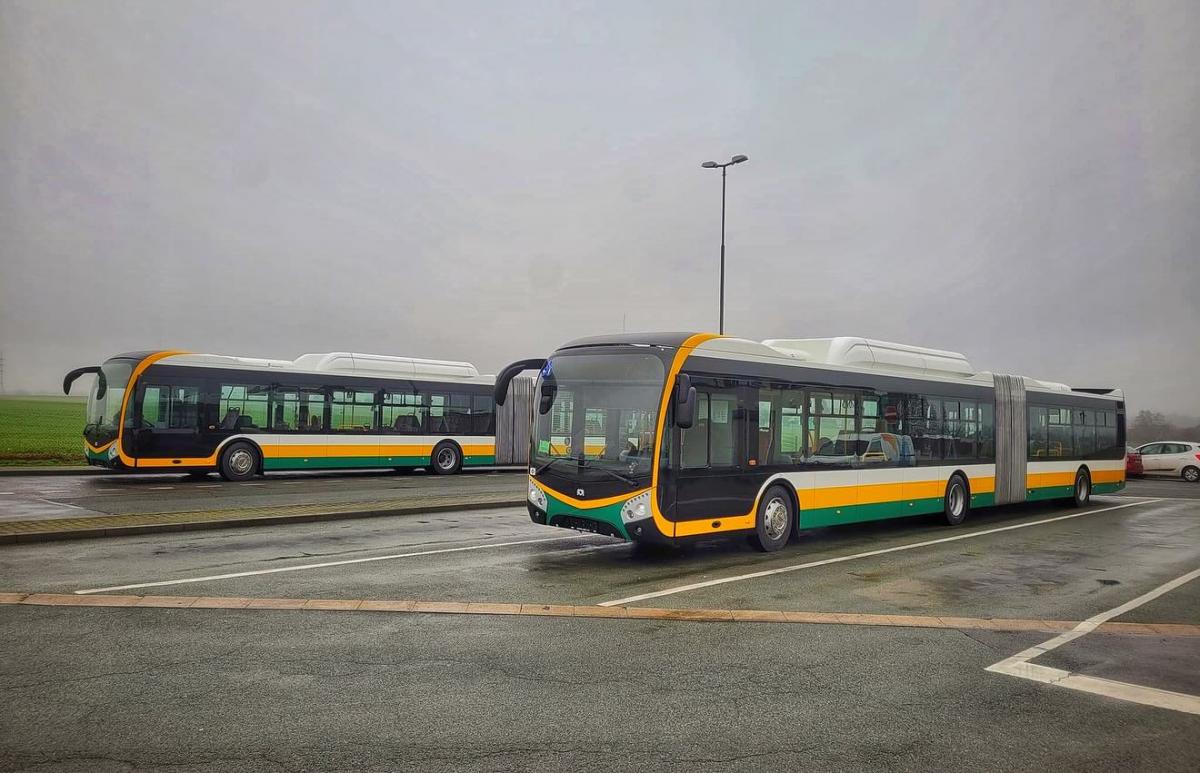 Liberecký dopravní podnik objednal od SOR kloubové autobusy…
Liberecký dopravní podnik objednal od SOR kloubové autobusy…
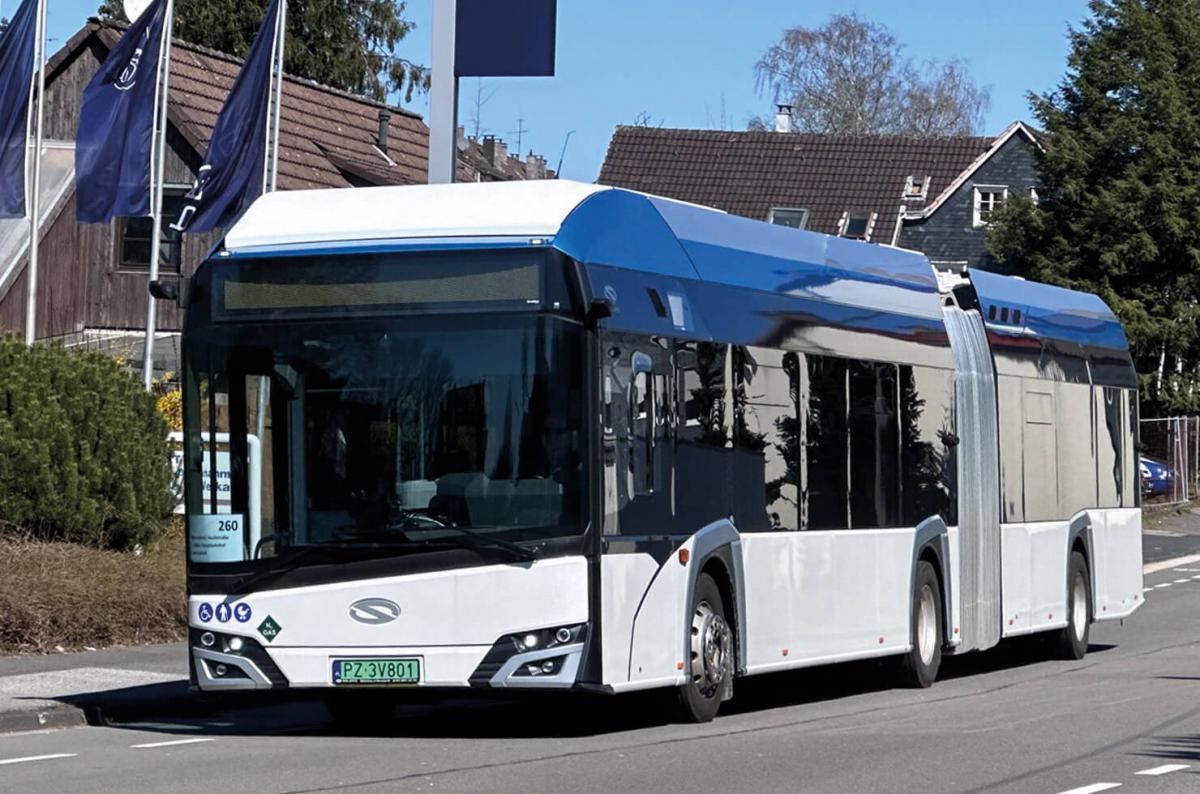 Solaris získal zakázku na vodíkové autobusy do německého…
Solaris získal zakázku na vodíkové autobusy do německého…
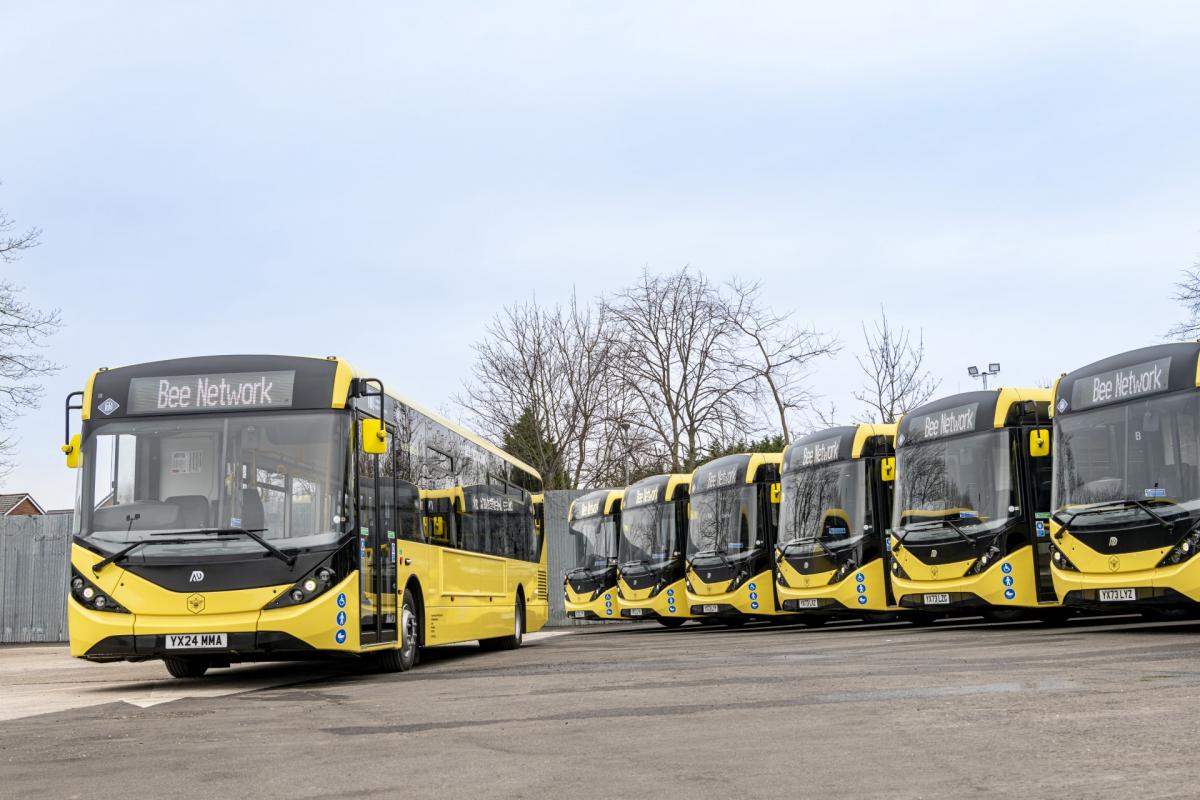 Spojené království jako lídr v udržitelné dopravě
Spojené království jako lídr v udržitelné dopravě








